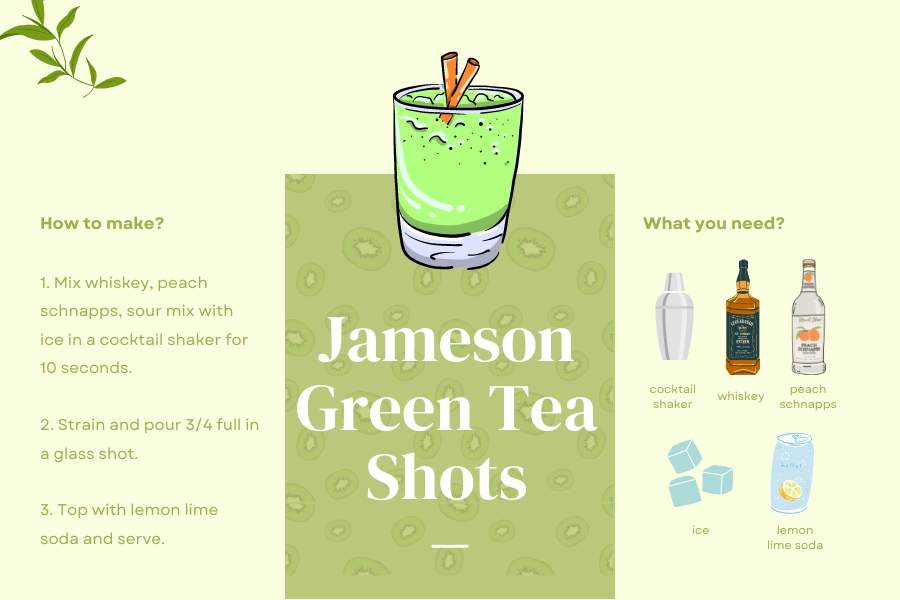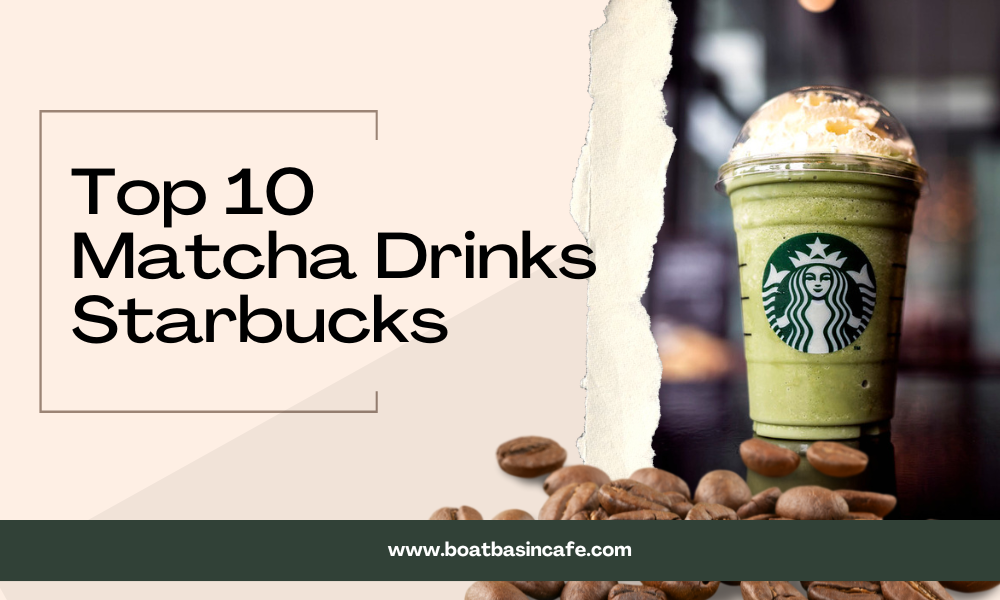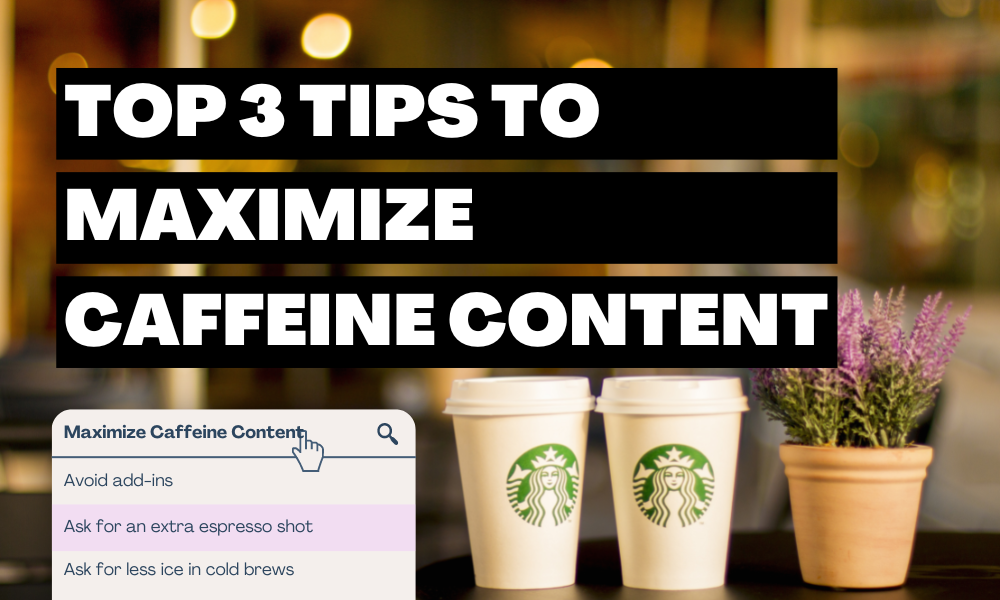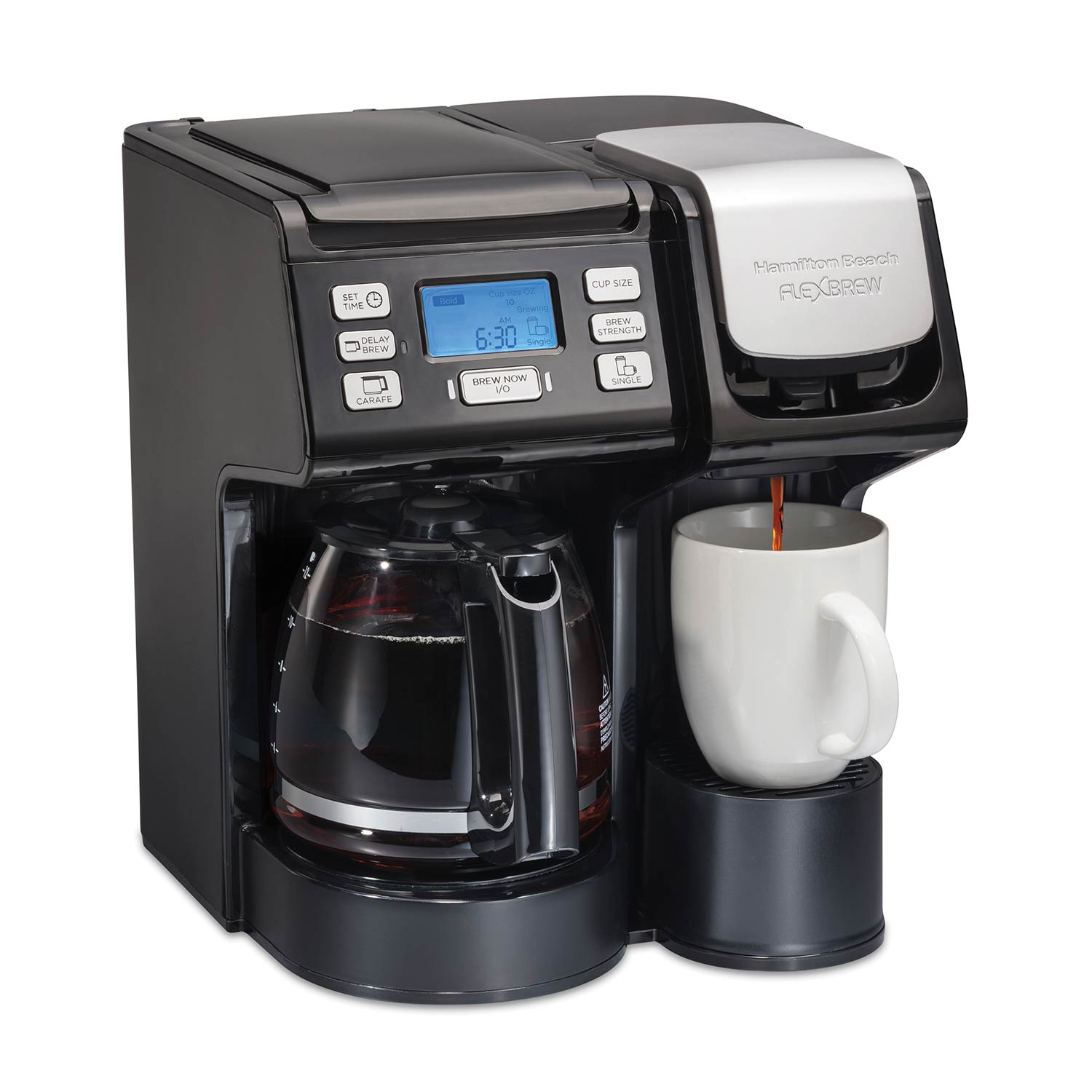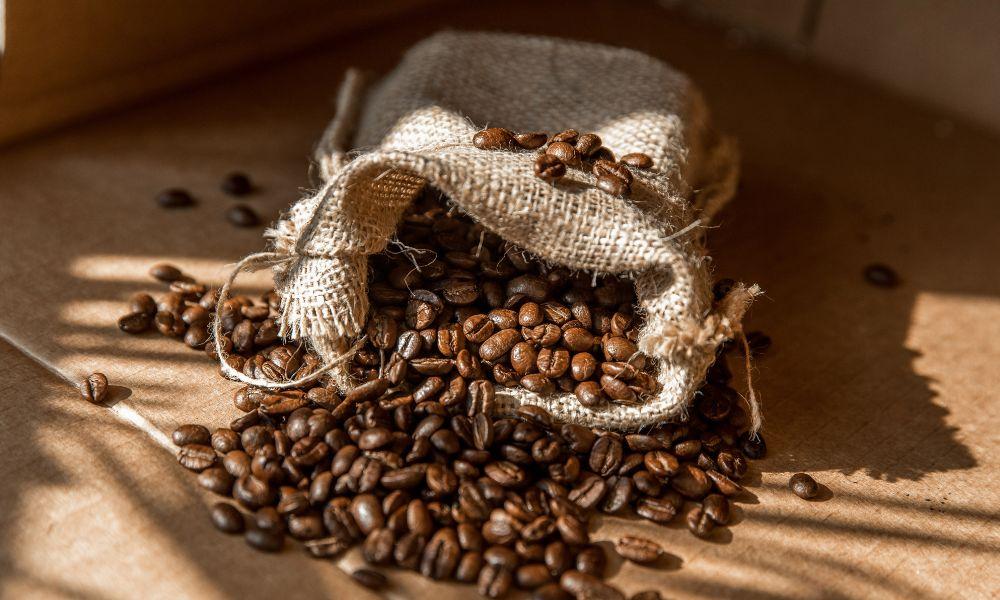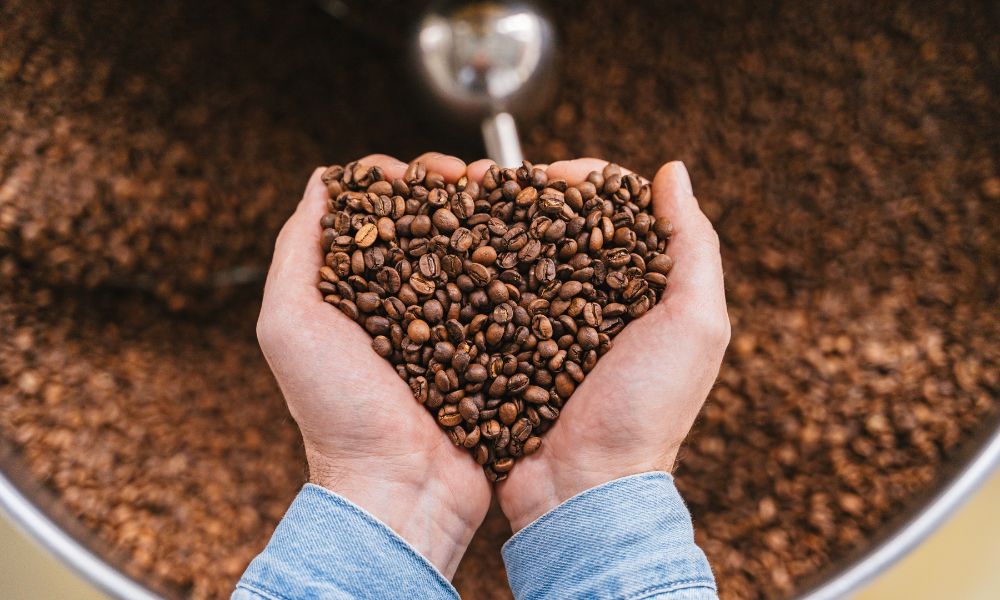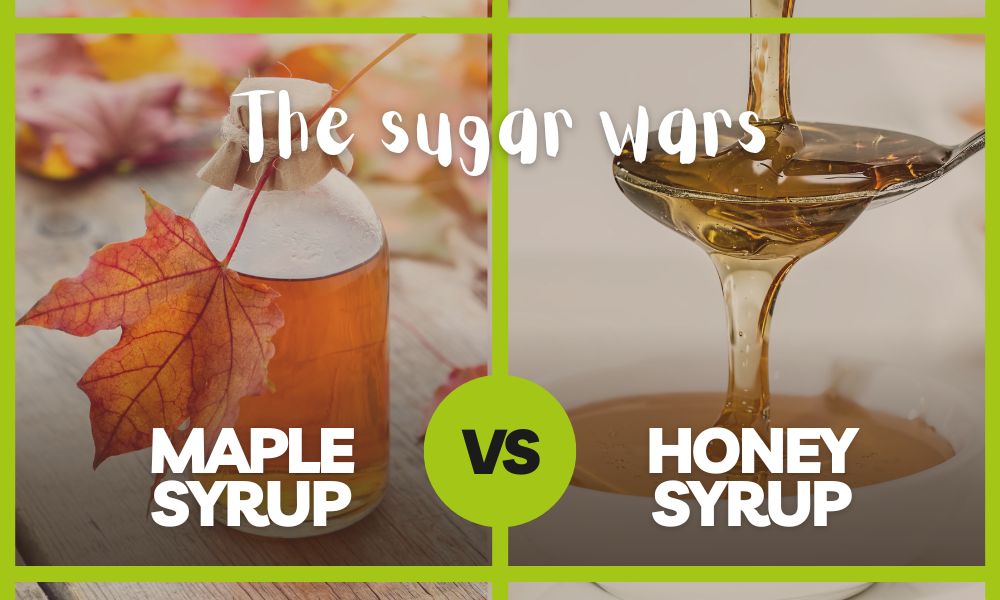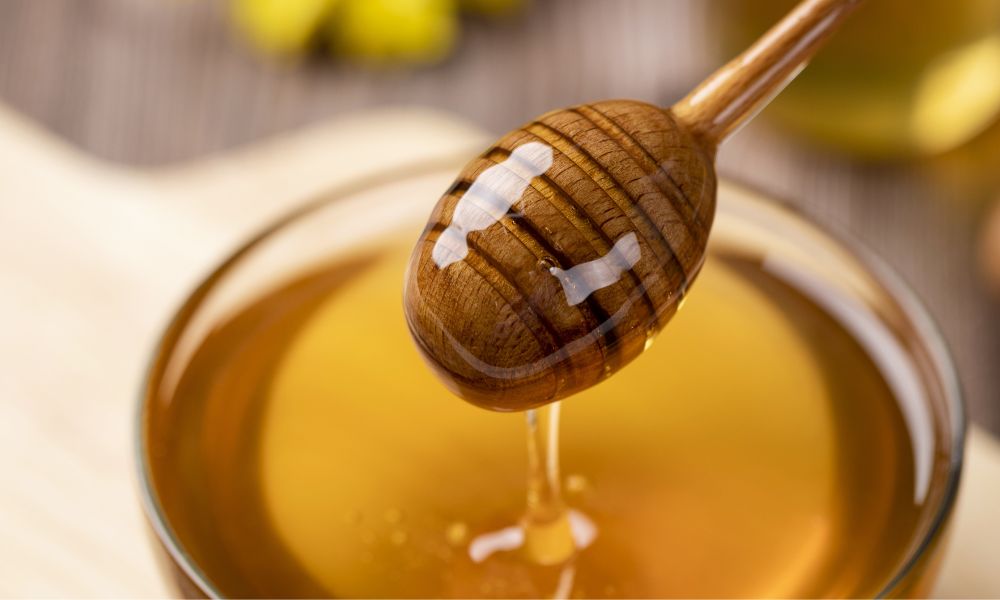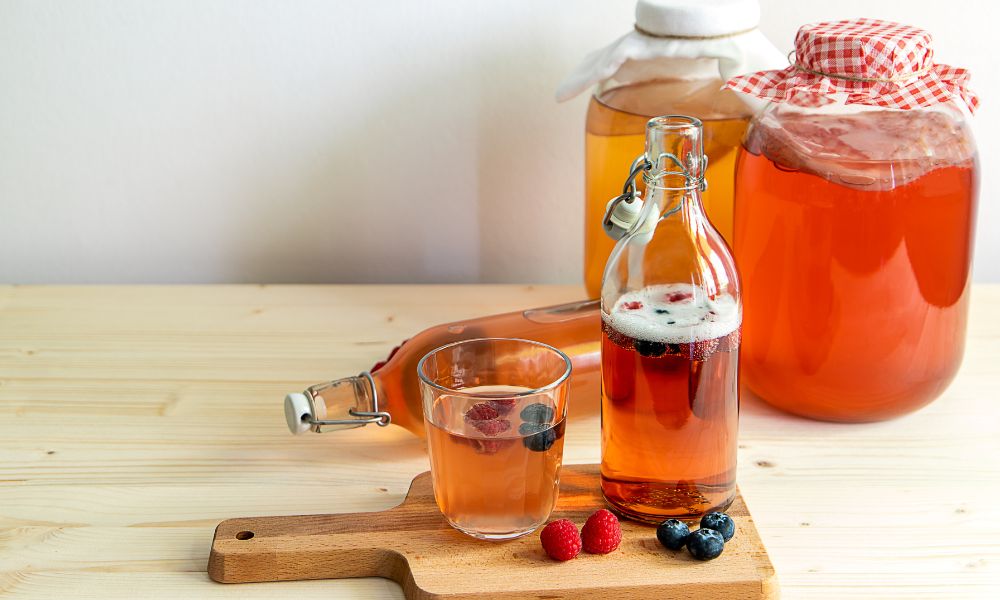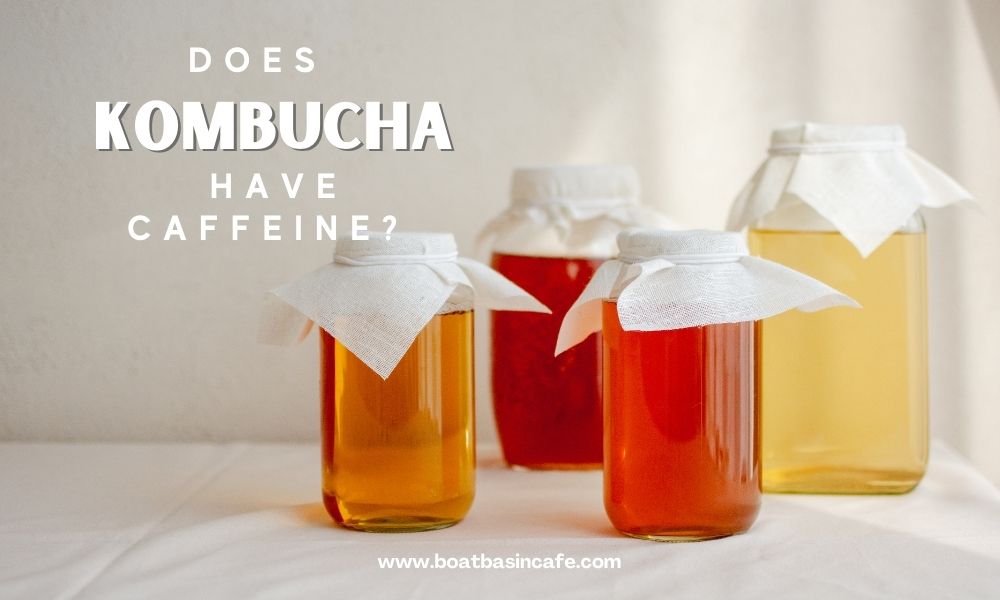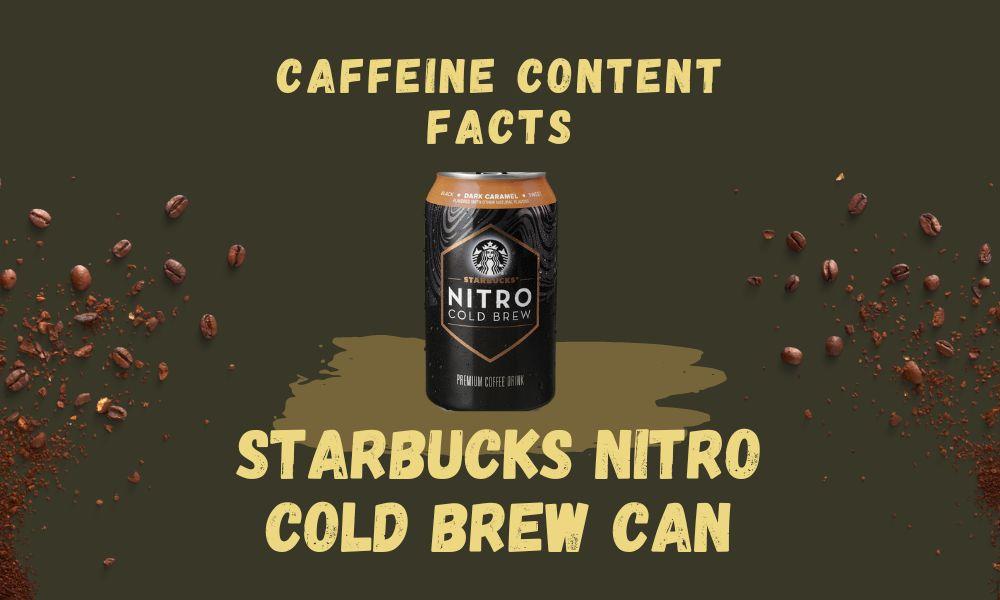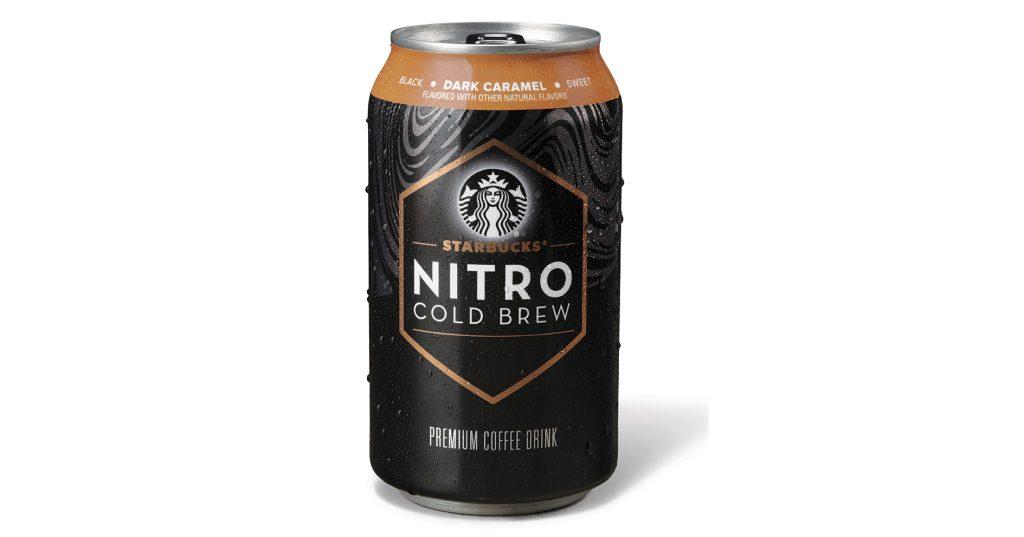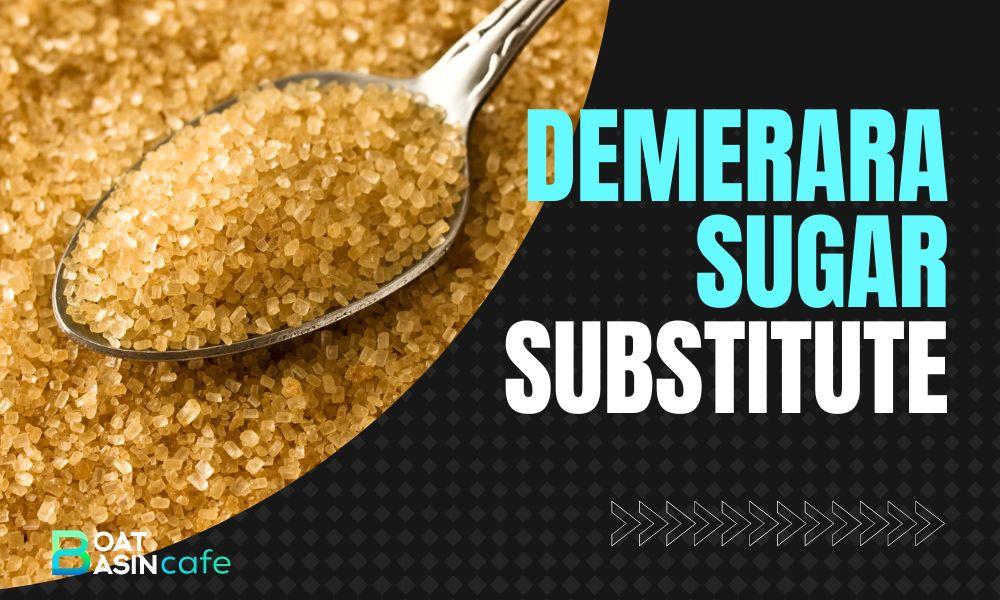Are you following a gluten-free diet and wondering if it is safe to drink coffee? If so, you’re not alone.
Many people with celiac disease or non-celiac gluten sensitivity avoid gluten in their diet to manage their symptoms, but it can be difficult to know which foods and drinks are safe to consume.
In this article, we’ll explore the question: is coffee gluten-free? We’ll look at the ingredients in coffee, how it’s processed, and whether it can be contaminated with gluten.
By the end of this article, you’ll have a better understanding of whether coffee is safe for a gluten-free diet.
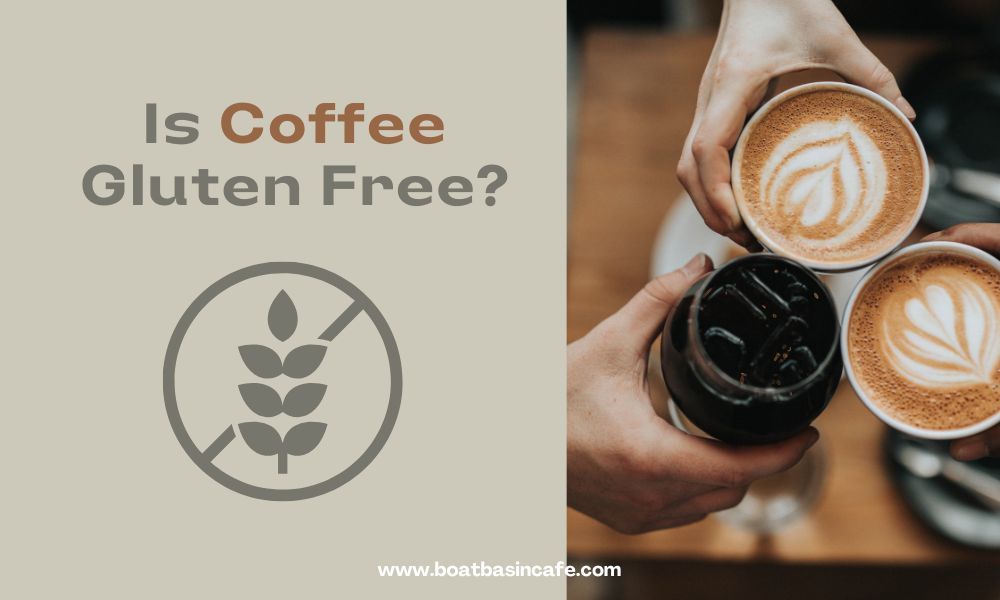
Is Coffee Gluten Free? (The Short Answer)
Yes, coffee is generally considered to be gluten-free. Coffee beans, which are the primary ingredient in coffee, do not contain any gluten.
Coffee beans come from the fruit of the coffee plant, which belongs to the family of plants known as Rubiaceae.
Gluten is a type of protein found in grains, specifically wheat, barley, and rye, which belong to the grass family (Poaceae).
As beans do not come from grain and do not belong to the grass family, they do not contain gluten naturally.
There Could Be Gluten in Your Coffee!
However, it’s important to note that there is a potential for gluten contamination in coffee.
This can occur if the coffee beans are processed or stored in facilities that also handle gluten-containing grains, or if shared equipment is used to process both gluten-free and gluten-containing items.
In addition, cross-contamination can occur in coffee shops if gluten-containing ingredients, such as syrups or flavorings, are used in the same area as gluten-free coffee.
Sources Behind Our Findings
The Celiac Disease Foundation’s “Gluten-Free Diet: A Comprehensive Resource Guide” includes coffee beans on its list of gluten-free grains and flours.
The Mayo Clinic’s “Gluten-Free Diet” guide states that “coffee and tea are naturally gluten-free,” and lists coffee beans as a gluten-free ingredient.
Why Do We Hear So Much About the Connection Between Coffee and Gluten Intolerance?
There was a rumor at one point that coffee was not considered a gluten-free food, which originated from a review published in 2017 that looked at the link between coffee and autoimmune diseases.
The abstract of the review stated that “coffee consumption was associated with cross-reactivity with gliadin antibodies in celiac patients,” which seemed to imply that drinking coffee could cause the same symptoms as consuming gluten in people who’re sensitive to gluten.
However, upon further examination, it was found that only one study had tested the cross-reactivity between coffee and gluten, and only two instant coffees were found to be cross-reactive.
This rumor serves as a reminder that it’s important to carefully review the evidence and not rely on health advice from the internet.
Do Coffee, Chocolate, and Cheese Slow Healing?
There is another rumor circulating on the internet that suggests that coffee, chocolate, and cheese can slow healing for those who are gluten sensitive.
This information comes from a study that looked at a list of more than 18 common foods that can potentially cross-react with gluten, including these three items.
However, the study actually advised that if a person following a gluten-free diet does not show improvement in their symptoms, they should consider eliminating other potential allergens such as yeast, oats, corn, rice, and millet.
If symptoms still persist after eliminating these potential allergens, further investigation into other food intolerances should be pursued.
It is important to note that this advice has been misconstrued and exaggerated by some health bloggers, and coffee, chocolate, and cheese are not necessarily harmful to those who are gluten sensitive.
These foods may only cause problems if a person has a negative reaction to them. It is also worth noting that chocolate often contains dairy, which some people may be sensitive to.
Why the Combination of Gluten and Coffee Is Bad for People with Sensitive Stomachs?
Some people with sensitive stomachs, such as those with celiac disease or non-celiac gluten intolerance, may experience gastrointestinal symptoms like diarrhea, abdominal pain, nausea, weight loss, bloating, fatigue, and cramping when consuming both gluten and coffee.
This is because the caffeine in coffee can irritate the already sensitive digestive system, and even the acidity of coffee itself can cause issues.
If you are following a gluten-free diet but are still experiencing symptoms, there are a few ways to try to identify the cause of your symptoms.
One option is to get a Cyrex Array 4 test, which is a blood test that checks for reactions to certain proteins in your diet.
Dietitians Suggest Trying an Elimination Diet
If you are following a gluten-free diet but still experiencing symptoms and think coffee may be the issue, try eliminating it for a week and replacing it with black or green tea.
If you usually have coffee in the afternoon, you can try substituting hot tea in the morning and iced tea in the afternoon.
After a week without coffee, you can try having one cup of organic, whole-bean coffee in the morning and pay attention to any effects it may have on your digestive system.
In Case of Negative Result –
If the symptoms come back and you can’t give up coffee entirely, diluting it with lactose-free milk or almond milk in a one-to-one ratio may help alleviate symptoms.
In Case of Positive Result –
If your symptoms improved or disappeared entirely while you were not consuming coffee and you do not experience any symptoms after having one cup of whole-bean coffee, it is likely safe to return to your normal coffee intake.
However, it is recommended to avoid instant and ground coffee and opt for organic, whole-bean coffee instead. There are many healthy alternatives to gluten-containing foods and drinks, so you don’t have to give up your favorites.
Learn more about the elimination diet from this article.
Explanation of Gluten-Free Diets and Why People Follow Them
Gluten-free diets are becoming more popular as people search for healthier eating options. Gluten is a protein found in some grains. It’s often used to make bread, cereals, pasta, and other foods that taste good.
Some people are sensitive to these proteins and experience symptoms such as bloating, flatulence (gas), diarrhea, and vomiting after consuming such products.
Gluten can be found in many packaged foods. However, you don’t have to avoid all of them if you follow a gluten-free diet. You should check the labels on all your foods carefully before you buy them at the store or prepare them at home.
The idea behind the gluten-free diet is to avoid cross-contamination with foods that contain gluten.
For example, if you touch your hands to your mouth after touching flour or another food containing gluten, there’s an increased risk of developing the celiac disease or another autoimmune disorder such as rheumatoid arthritis or type 1 diabetes.
If you have celiac disease, which is an autoimmune disorder where the body reacts to gluten in the same way it would react to cancer cells, then no amount of exposure can be considered safe for you.
Celiac disease affects about 1 percent of people in North America and Europe, according to a National Center for Biotechnology Information report.
People who do not have celiac disease but follow a gluten-free diet because they are sensitive to it can still consume some gluten-free products without getting sick because they don’t react so strongly to it.
In fact, they should; because eliminating gluten completely from your diet may cause nutritional deficiencies.
Sources of Gluten in Food and Drink
Gluten is responsible for the elastic texture of the dough and is commonly used as a binding agent in various food products.
Here are some common sources of gluten in food and drink:
- Wheat: This grain is the most common source of gluten and is found in a variety of products, including bread, pasta, cereals, crackers, pastries, and baked goods. Wheat is also often used as a thickening agent in soups, sauces, and processed meats.
- Barley: This grain is used to make beer and is also found in some types of malt, malt vinegar, and malt extract.
- Rye: This grain is used to make rye bread and other baked goods, as well as some types of whiskey.
- Oats: Oats themselves do not contain gluten, but they are often grown and processed in facilities that also handle wheat, barley, and rye. As a result, oats can be contaminated with gluten.
If you are following a strict gluten-free diet, it is important to choose oats that are labeled “gluten-free” to ensure that they have been processed in a dedicated facility. The same rule applies while buying coffee.
Other sources of gluten include:
- Soy sauce, marinades, and gravies, which are often made with wheat
- Salad dressings, which may contain wheat-based thickening agents
- Processed meats, which may contain wheat-based binders
- Candies and chocolates, which may contain wheat-based ingredients
If Coffee Isn’t the Culprit, Then What?
In addition to considering the potential impact of coffee on your symptoms, there are other issues related to gluten intolerance that you should also explore.
These may include:
- Lactose intolerance, fructose malabsorption, or other intolerances to carbohydrates (such as high FODMAPs)
- Small intestinal bacterial overgrowth (SIBO)
- Microscopic colitis
- Pancreatic enzyme deficiencies
- A rare condition called refractory celiac disease that may require the use of steroids to manage.
People with gluten sensitivity need to work with their healthcare providers to identify and address any of these potential causes of their symptoms.
What If You Have Symptoms No Matter What You Eat?
According to a 2017 study conducted by researchers at the University of Chicago Celiac Center, even after more than two years of following a gluten-free diet, about 60% of children and adults still experience non-gastrointestinal symptoms.
This could be due to cross-reactivity, which occurs when the body mistakes a protein in a particular food for gluten because of its similar protein structure.
When this happens, the immune system releases anti-a-gliadin and anti-tTG antibodies to fight the perceived “gluten,” leading to inflammation in the small intestine.
A study published in Food and Nutrition Sciences in 2013 found that certain foods can be cross-reactive for people with celiac disease, including
- Dairy
- Corn
- Millet
- Rice
- Yeast
- Oats
Instant coffee was also found to be cross-reactive, but “pure coffee,” or black coffee, was not.
Therefore, plain brewed coffee is a safe choice for those with celiac disease and gluten sensitivity to avoid hidden gluten ingredients.
If you don’t enjoy plain black coffee, consider trying Expedition Roasters’ variety of flavors, such as coffee crumb cake, blueberry cobbler, and churro. These coffees are certified to be gluten-free and allergen-free.
Do I Have to Give Up “Flavored Coffee” on a Gluten-Free Diet?
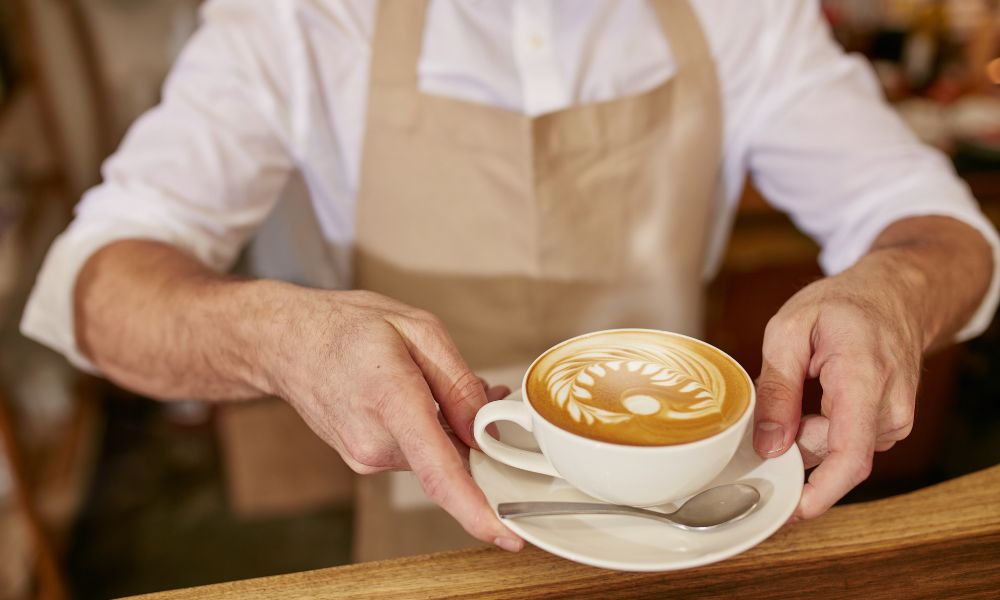
Pre-flavored coffee beans or ground coffee may be labeled as “gluten-free” and are generally considered to be gluten-free.
However, coffee flavorings are often made with a proprietary blend of “natural flavors,” which can include gluten-containing ingredients, such as barley-based flavorings.
But it is uncommon for natural flavors used in coffee to be derived from gluten grains.
Many coffee flavorings also have an alcohol base, which is typically derived from grains, including gluten grains.
Some experts believe that the gluten protein is removed during the distillation process, making the alcohol gluten-free, but some people with gluten sensitivity may still react to distilled grains.
The amount of grain-based alcohol in flavored coffee is small, and even if it contained residual gluten, it would be below the level of 20 parts per million that is generally considered “gluten-free”, according to this Celiac Disease Foundation article.
However, some people may be sensitive even to trace amounts of gluten, so it is important to exercise caution if you have not tried flavored coffee before, especially if you tend to react to gluten-based distilled alcoholic beverages or are particularly sensitive to trace amounts of gluten.
Alternatively, you can make your own flavored coffee at home using alcohol-free flavoring.
Is Instant Coffee Gluten-Free?

While most instant coffees are gluten-free, it is possible for them to contain gluten due to the highly processed nature of instant coffee.
If you find it difficult to give up the convenience to drink instant coffee, consider trying Alpine Start’s gluten-free instant coffee options. This gluten-free instant coffee comes in coconut creamer latte, dirty chai latte, and regular flavors.
However, the 2013 study also found that some types of instant coffee can be cross-reactive for people with celiac disease, while others were not.
The longer the process between growing the beans and packaging the final product, the greater the risk of gluten cross-contamination. This is known as “gluten cross-contact”.
Gluten cross-contamination occurs when gluten-free food comes into contact with gluten through another food, kitchen equipment or utensils, or a person.
Now that we come to this, let’s discuss …
Potential Sources of Gluten Contamination in Coffee and What to Do About It
There are two potential stages of gluten contamination in coffee that you should be aware of if you are following a gluten-free diet. It has a very funny way to sneak into your cup of coffee:
At the Processing Stage
As you already know, coffee itself is naturally gluten-free.
However, if coffee beans are processed in a facility that also handles gluten-containing grains like wheat, barley, or rye, there is a risk of cross-contamination of the beans.
Gluten contamination can also occur through traditional coffee add-ins, such as creamers or sugar packets, which may contain gluten.
Tip 1 – Buy Organic Beans and Grind Them at Home
To avoid this risk, it is suggested to buy plain coffee beans and grind them at home to ensure that there is no contamination with gluten-containing products.
However, it is important to note that even plain coffee beans may have been processed on equipment that also handles gluten-containing products.
So it may be necessary to look for beans that are certified gluten-free to ensure that they have not been contaminated during processing.
The Cafe Britt Origin Coffee is our favorite gluten-free coffee brand. These beans are made from 100% pure Costa Rican Arabica beans and are grown at high altitudes.
The company’s Origin Coffee is also kosher. Additionally, the beans are packaged in a tri-layer aluminum bag to help maintain their freshness.
Tip 2 – Avoid Using Shared Grinders
If you are using shared equipment to grind coffee beans, there is a risk that the plain beans may become contaminated with flavored beans, which may contain gluten.
To minimize this risk, it is recommended to grind your own coffee using a dedicated coffee grinder.
You can purchase an electric coffee grinder for under $20 on online retailers such as Amazon.
Tip 3 – Stick with Unflavored Coffee Beans
Some flavored coffee beans may be derived from ingredients that contain gluten, such as barley.
So, it is important to check the label or contact the manufacturer to confirm that the beans are safe for a gluten-free diet.
To be safe, you may want to stick with unflavored coffee or look for flavored beans that are specifically labeled as gluten-free.
Try out Stumptown Coffee Roasters Holler Mountain Whole Bean Coffee. It’s best enjoyed black by not adding any sugar (because of the natural sweetness).
Tip 4 – Check the Labels or Ask the Manufacturer Directly
You can check the labels of the coffee beans or the add-ins for an allergen disclosure statement, or you can contact the company directly to inquire about their processes and ingredients.
You can also look on the company’s website for more information about their products. You must be vigilant about checking labels always if you’re sensitive to gluten.
At the Café
It’s important to be aware that cross-contamination can also occur at restaurants and cafes, especially if they are using the same coffee maker to brew all types of coffee, including flavored ones.
For example, Starbucks’ flavored coffee drinks, such as the Pumpkin Spice Latte, may not be considered gluten-free due to the risk of cross-contamination from other products like the coffee machine in Starbucks and the possibility of ingredients varying from store to store.
Tip 5 – Order Plain Coffee Without Any Creamers or Sugar
You should be aware that adding creamers, syrups, and sugar to your coffee can increase the risk of gluten contamination.
Some powdered creamers may contain gluten, especially flavored ones, as they may include thickening agents and other ingredients that contain gluten, such as wheat flour.
To minimize the risk of gluten contamination, it is recommended to stick to plain coffee or lattes when ordering at these types of establishments.
Beware of This Rumor
Contrary to popular belief, coffee companies do not add wheat to their coffee beans to prevent them from sticking together.
This is a rumor that is not true and there is no evidence to suggest that any coffee company would do this.
It is important to be mindful of spreading misinformation and to always verify the information before sharing it.
Buy from Specialty Brands to Avoid Gluten Contamination
Consider buying specialty products like Laird Superfood creamers, which are dairy-free, vegan, and gluten-free, to reduce the possibility of gluten contaminating your coffee.
While well-known brands like Coffee-Mate and International Delight are often regarded as gluten-free, choosing a specialty brand might provide those who are sensitive to trace quantities of gluten additional peace of mind.
Pre-flavored coffee blends, such as chocolate hazelnut or French vanilla, are generally considered gluten-free, as it is rare for artificial flavorings in the US to be made from barley or wheat.
How to Brew Gluten-Free Coffee at Home
Brewing gluten-free coffee at home is relatively simple and requires only a few steps:
- Start by purchasing certified gluten-free coffee beans or ground coffee. Look for coffee beans that are labeled as “gluten-free” or are certified by a third-party organization to ensure that they have been produced in a dedicated facility.
- Clean all your coffee-making equipment, including your coffee pot, grinder, and filters, to remove any potential sources of gluten contamination.
- Measure out the desired amount of coffee beans or ground coffee and grind them to your desired fineness with a dedicated grinder. Learn how many scoops of coffee are needed for your desired quantity of cups from this article.
- Place the coffee filter in the coffee pot or machine and add the ground coffee. Opt for a paper filter, as some reusable filters may be made from gluten-containing materials, such as nylon or stainless steel.
- Boil water and pour it over the coffee, using the appropriate amount of water for the amount of coffee you are brewing.
- Allow the coffee to brew for the desired amount of time, usually around 4-5 minutes for drip coffee makers.
- If you add milk to your coffee, choose a gluten-free option (lactose-free milk or plant-based milk) such as almond milk or soy milk.
That’s it! You can now enjoy a delicious and safe cup of coffee at home.
To Brew Coffee Using a French Press, Follow These Steps:
Step – 1:
First, you’ll need to grind your beans. You’ll want to grind them coarsely—like, really coarse. The best way to do this is with a burr grinder, which will give you the perfect consistency for French press coffee.
Step – 2:
Next, place your French press carafe on a scale and zero it out. Measure out 35 grams of ground coffee and reset the scale to zero.
Step – 3:
You can then measure in 250 grams of hot water and stir for 5 seconds before pouring in more water until the scale reaches 500 grams total. Let it steep for 2 minutes before stirring again.
Step – 4:
After an additional 2 minutes, slowly press down the plunger on the carafe to separate the coffee grounds and serve the coffee.
If you want cold brew instead of hot brew, simply combine 4 cups of water per 1 cup of whole beans and let it steep overnight before drinking a concentrated brew with ice as desired.
Caffeine and Gluten-Free Coffee Alternatives
There are a few different options for gluten-free coffee alternatives that can provide a similar flavor to coffee.
One popular choice is roast chicory root, which is a bitter vegetable that is roasted and ground to create a caffeine-free alternative.
Chicory root is also prebiotic, meaning that it nourishes the good bacteria in the gut, which can contribute to overall better health.
There are two types of caffeine-free coffee substitutes that you can buy: instant or French press style.
However, it is important to check the label before purchasing to ensure that the product is gluten-free, as some coffee substitutes contain barley.
Other options include roasted fig coffee substitute and date seed coffee.
You won’t find these coffee alternatives in your regular grocery stores. Look for them at high-end health food stores or online retailers such as Amazon.
FAQs
Which coffee brands are gluten-free?
You can check the website of the Gluten-Free Certification Organization (GFCO) to see if any coffee brands have been certified as gluten-free by this third-party agency.
Upon reviewing the list, it does not appear that any mainstream popular coffee brands are currently certified gluten-free by the GFCO.
Is Starbucks regular coffee gluten-free?
You can be confident that Starbucks’ regular coffee is gluten-free, as stated in the company’s FAQ on Amazon. The coffee is made without wheat products.
However, it’s not safe to drink it at a store, as the stores may prepare coffee alongside other products and ingredients containing gluten, leading to a risk of getting cross-contaminated with allergens.
Is instant coffee gluten-free?
Is instant coffee gluten-free?
I’ve been drinking instant coffee every day without any problems. Instant coffee is naturally gluten-free as long as it only contains coffee as an ingredient.
Does NESCAFE instant coffee have gluten?
Nescafe coffee, which is owned by Nestle, does not contain gluten according to the company.
Nestle considers a product to be gluten-free if no gluten ingredients are present, either directly or because of cross-contact.
If a product label includes an allergen advisory statement, such as “may contain wheat,” it is not considered to be gluten-free by Nestle.
It is recommended by the company to check the label for the most current information before purchasing and consuming Nescafe coffee or any other product.
What drinks can celiacs drink?
Celiacs can drink coffee, tea, and other beverages made from naturally gluten-free ingredients, such as almond milk, soy milk, and coconut milk.
Other gluten-free drinks include soda, carbonated water, natural wine, sports drinks, and organic fruit juices.
What foods aggravate celiac disease?
Foods that contain gluten, such as wheat, barley, and rye, can aggravate celiac disease. Apart from these, other grains that contain gluten include spelt, kamut, and triticale.
Foods that may contain gluten include bread, cereals, pasta, gravies, sauces, and some processed meats.
Can coffee help with celiac disease?
No, drinking coffee does not help with celiac disease. However, it may be safe for a gluten-free diet if it is prepared and served with gluten-free ingredients.


